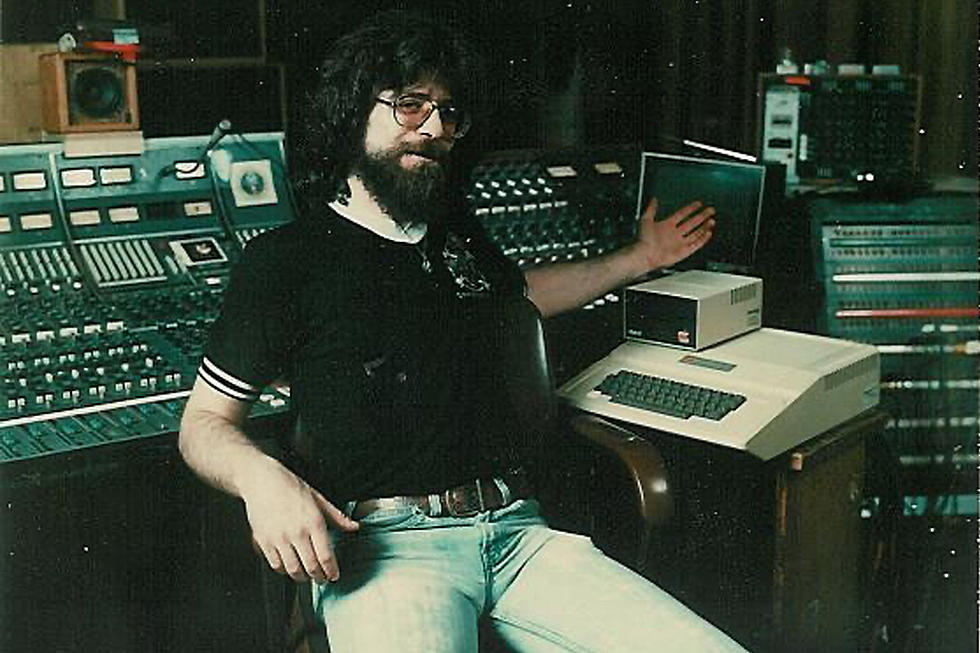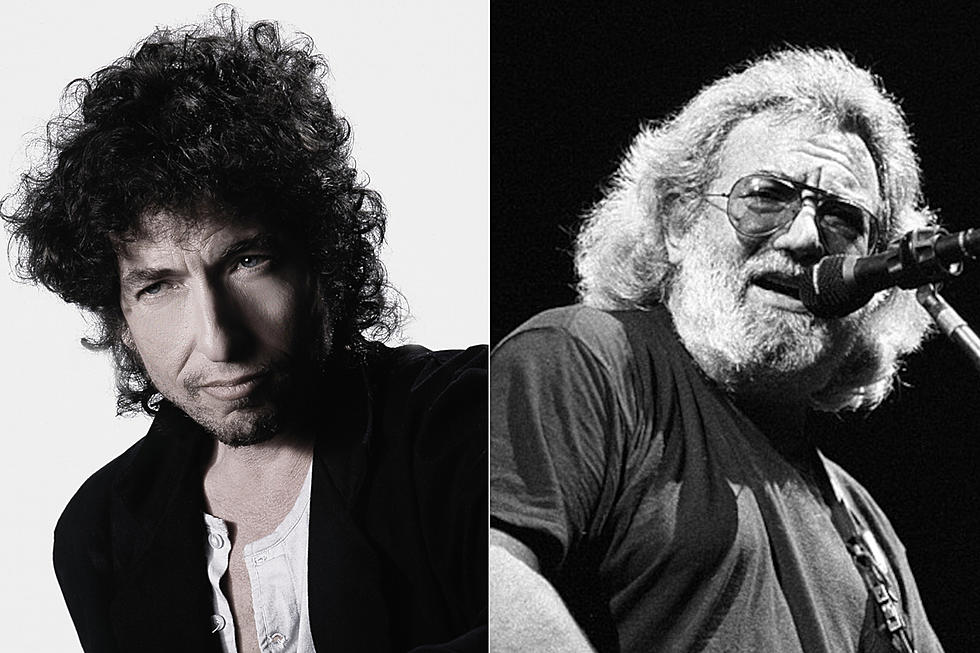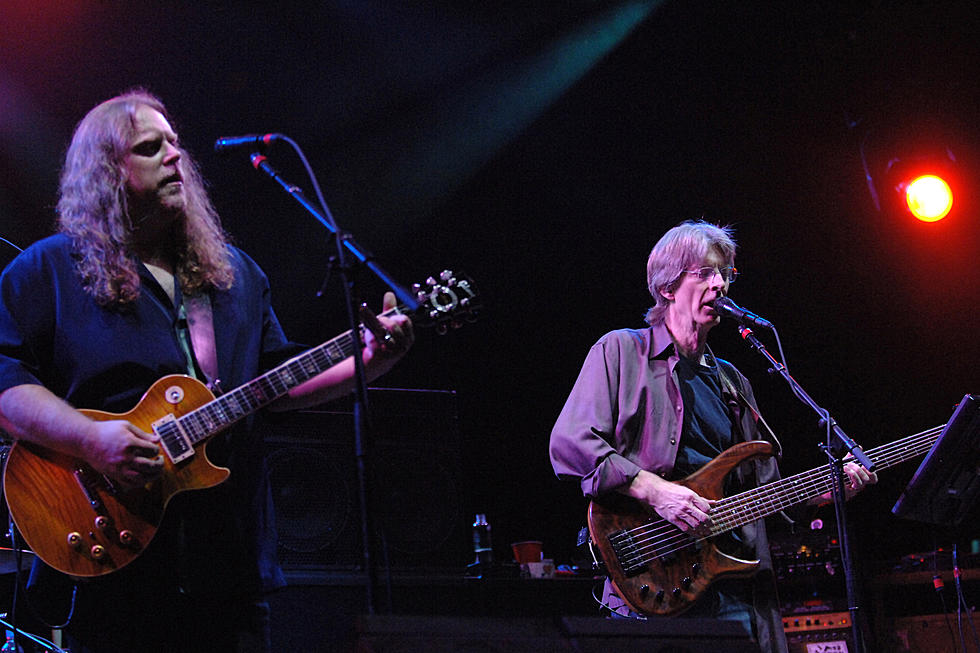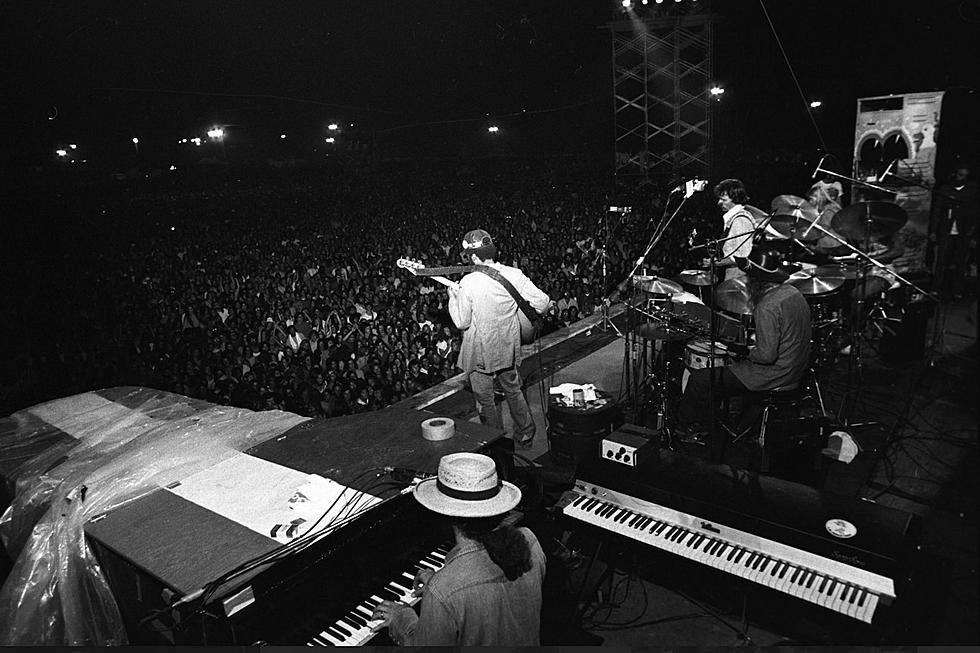
Grateful Dead Lineup Changes: A Complete Guide
The Grateful Dead are an American institution, one of very few bands that did exactly what it wanted and still managed to be incredibly successful. Over the years, and through countless live shows, the band stayed true to its creative vision. Even though the group's core would remain the same, other members would come and go over 30 years. Check out the band's long, strange trip with our complete guide to the Grateful Dead's lineup changes.
1965-67
Jerry Garcia / Bob Weir / Ron 'Pigpen' McKernan / Phil Lesh / Bill KreutzmannThe roots of the Grateful Dead can be traced back to 1964 and a bluegrass combo called Mother McCree's Uptown Jug Champions. The group featured lead guitarist Jerry Garcia, rhythm guitarist Bob Weir and future Dead keyboardist Ron 'Pigpen' McKernan on harmonica and vocals. Members Dave Parker,Tom Stone and Mike Garbett would soon leave. With the addition of bassist Phil Lesh and drummer Bill Kreutzmann, they would reshape themselves as the Warlocks in 1965. By the end of the year, a new name was chosen and the Grateful Dead were officially born. Even though the Warlocks had made some early recordings for the Autumn and Scorpio labels, nothing came of them. In mid-1966, the Dead signed to Reprise Records to record their first album.
1967- 68
Jerry Garcia / Bob Weir / Ron 'Pigpen' McKernan / Phil Lesh / Bill Kreutzmann / Mickey HartToward the end of 1967, the Dead were rapidly developing their reputation as a mind-blowing live act. To expand their sound, they brought in Mickey Hart on drums and percussion. The addition of a second drummer gave the band a distinct power, not only in live performances but in the studio too. This lineup recorded the Dead's adventurous second album 'Anthem of the Sun,' which was released in the summer of 1968.
1968- 70
Jerry Garcia / Bob Weir / Ron 'Pigpen' McKernan / Phil Lesh / Bill Kreutzmann / Mickey Hart / Tom ConstantenInstead of swapping out members, the Dead kept adding more to their lineup. Keyboardist Tom Constanten had lent a hand during the recording of 'Anthem of the Sun,' and by late 1968 he was a full-time member of the band. The group's two-drummers, two-keyboardists lineup would be short-lived, lasting a little more than a year, but it made two of the band's most significant releases: the third studio album 'Aoxomoxoa' and the group's first concert record, 'Live/Dead,' both released in 1969.
1970-71
Jerry Garcia / Bob Weir / Ron 'Pigpen' McKernan/ Phil Lesh / Bill Kreutzmann / Mickey Hart / Robert HunterAt the dawn of the new decade, the seven-man lineup was history. With Constanten out of the picture, the band settled back into the previous six-member incarnation. In the process, they would turn down the volume and return to the band's folk roots. The focus also shifted in terms of songwriting, which took a more concise and less abstract approach. The result was two of the band's most cherished albums, 'Workingman's Dead' and 'American Beauty,' both released in 1970. By the time of 'American Beauty,' lyricist Robert Hunter had become a sort of auxiliary seventh member who would contribute greatly to the Dead's legacy.
1971
Jerry Garcia / Bob Weir / Ron 'Pigpen' McKernan/ Phil Lesh / Bill KreutzmannFor the better part of 1971, drummer Mickey Hart took a break from the band. Lenny Hart, Mickey's father, had been the group's financial manager, and it was discovered that he had been doing some creative bookkeeping and stealing from the band. Once this was discovered, Mickey left the band to deal with the ramifications of his father's wrongdoings. He wound not return in full until 1974.
1971-72
Jerry Garcia / Bob Weir / Ron 'Pigpen' McKernan/ Phil Lesh / Bill Kreutzmann / Keith GodchauxInstead of adding a replacement for the departed Hart, the band decided to, once again, bring in a second keyboardist. Keith Godchaux got the job. During this period, the band released a self-titled album (not to be confused with their debut) which featured the five-man lineup recorded earlier in 1971. The new six-piece band spent the year gigging before morphing into yet another incarnation.
1972
Jerry Garcia / Bob Weir / Ron 'Pigpen' McKernan/ Phil Lesh / Bill Kreutzmann / Keith Godchaux / Donna GodchauxBy the spring of 1972, Keith's wife Donna Godchaux joined the band. She had previously been a sessions singer, working at studios in Muscle Shoals, when she met her future spouse. This added yet another unexpected angle to the Dead's sound. She remained in the band for most of the rest of the decade, contributing to such fan favorites as 'Wake Of The Flood,' 'Blues For Allah' and the classic live album, 'Europe '72.'
1972-74
Jerry Garcia / Bob Weir / Phil Lesh / Bill Kreutzmann/ Keith Godchaux / Donna GodchauxBy the spring of 1972, founding member Ron 'Pigpen' McKernan was dealing with some serious health issues. In June, he took a break from the band, after doctors advised him to retreat from the road. McKernan was soon diagnosed with a liver condition called congenital biliary cirrhosis, something not helped by his legendary alcohol intake. His last performance with the band was on May 26, 1972 in London, England. McKernan would be dead within a year.
1974-79
Jerry Garcia / Bob Weir / Phil Lesh / Bill Kreutzmann/ Mickey Hart / Keith Godchaux / Donna GodchauxHart made a notable return to the band, though otherwise the second half of the decade was less dramatic than the first had been as the Godchauxs remained. However, 'From The Mars Hotel' and 'Terrapin Station' were not the commercial success that 'American Beauty' had been. That perhaps led to a broadened sound palette, as 'Shakedown Street' found the band employing funk and (on the title track) even disco elements.
1979-90
Jerry Garcia / Bob Weir / Phil Lesh / Bill Kreutzmann/ Mickey Hart / Brent MydlandKeith and Donna Godchaux made their last appearance as members of the Grateful Dead on Feb. 17, 1979. In July of 1980, Keith was killed in a car accident. Keyboardist Brent Mydland was brought in, returning the band to a six-man lineup. During this time, the band enjoyed the biggest commercial success of its career with the 1987 album 'In The Dark' and the single 'A Touch Of Gray.' Together, they also released the final studio Dead album, 1989's 'Built To Last.' Mydland died in July of 1990 of a drug overdose, even as Garcia's health issues -- ranging from diabetes to addiction -- began to worsen.
1990-92
Jerry Garcia / Bob Weir / Phil Lesh / Bill Kreutzmann/ Mickey Hart / Vince Welnick / Bruce HornsbyAfter Mydland's passing, the band enlisted a seemingly unlikely replacement: Vince Welnick, a former member of the Tubes. Though also San Francisco based, the outrageous, theatrical Tubes were a far cry from the Dead's style. Welnick, however, took to the role and remained with the Grateful Dead until their demise in 1995. This lineup was often augmented by pianist Bruce Hornsby, who played a significant part of this final era, though never as a full-fledged member. He and Constanten are the only Dead keyboardists who are still alive.
1992-95
Jerry Garcia / Bob Weir / Phil Lesh / Bill Kreutzmann/ Mickey Hart / Vince WelnickThe late '80s and early '90s found the band playing to their largest audiences ever. They had, at this point, become a rock tradition, drawing fans both old and young alike. Garcia, however, would die on Aug. 9, 1995, halting the Grateful Dead. A decade later, Vince Welnick committed suicide after years of depression.
More From Ultimate Classic Rock









